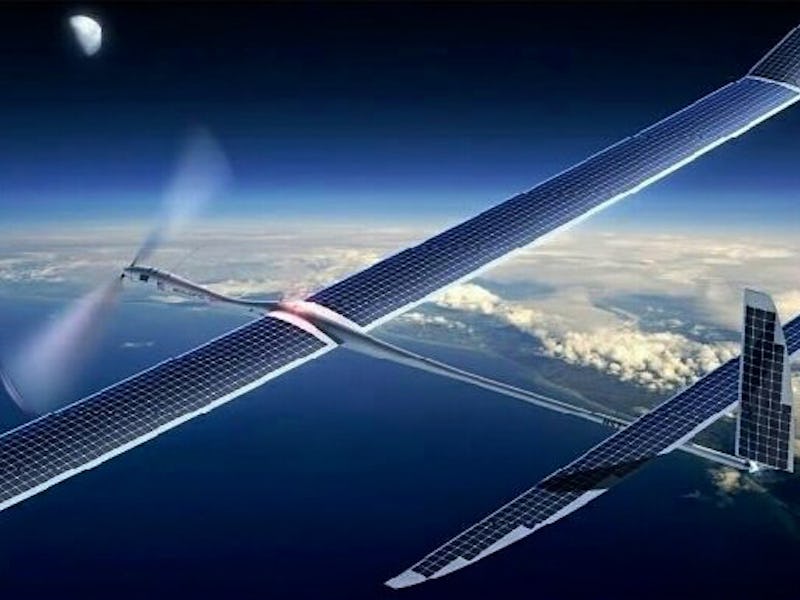Google Skybender Drones Could Deliver 5G
5G is superior to 4G, but can it work for your daily purposes? If not, whose?

Google is fast-working on a way to make 5G wireless technology a practicable reality by way of solar-driven drones, several sources report across the web Monday.
So why drones? Why not bounce such signals off of cell towers? It has to do with the way 5G works, by way of millimeter wave radio transmissions. Theoretically, millimeter wave frequencies (3 to 300 gigahertz) can transmit data up to 40 times faster than current 4G LTE wireless tech — but the shorter breaks in 5G waves, while allowing for an increase of data carry do shorten the range of transmission, can be scattered by natural atmospheric activity and make it harder to push through structures. Cell towers just won’t cut it with 5G.
As for current cellular networks, they stick to bands lower on the spectrum and ride carrier waves that run in the hundreds of megahertz — and while these signals zip around obstacles and through the atmosphere, making cell towers fine for its purposes, 4G’s heavy usage has pretty much reached the available limit.
According to a 2013 article by IEEE Spectrum titled Millimeter Waves May Be the Future of 5G Phones, at that time there were already devices using millimeter waves when fixed, line-of-sight transmissions were set. It seems that today Google has developed a workaround to interruption — the aforementioned solar-powered drones — which would put 5G relays in the direct, close-proximity positioning where they would work.
With its buzzed-about project title “Skybender,” the general understanding — as Google has not made any formal presentation concerning this effort thus far — is that the company is testing its drones out of New Mexico’s Spaceport America. The Guardian reports that the drones are basically experimental mobile hotspots, which could carry focused transmissions from flying device to your device.
A good follow-up to all this might be whether or not this is feasible for daily life, as in are we looking at a future where cell towers lose status to a squadron of drones soaring above? Perhaps not, as logic suggests it might end up in use for emergency situations (as suggested by Ubergizmo) or in places where higher bandwidth could be critical; an example can be taken from the 2010 article “Remote Patient Monitoring Within a Future 5G Infrastructure.” The piece states:
“Within a future 5G infrastructure, new possibilities will be available due to improved addressing solutions and extended security services in addition to higher bandwidth in the wireless communication link. Thus 5G solutions can represent a paradigm shift regarding remote patient monitoring and tracking possibilities, with enhancement in transmitting information between patients and health care services.”
Another interesting use of 5G is mentioned in a November 2015 write-up from the International Business Times that sees the future of 5G could be found in driverless cars — that the wireless tech could “enable self-driving cars and connected cars to share information with each other, so if an accident occurs, the car closest to the accident can wirelessly send information back to all the cars behind it on the highway,” and that “sensors in the car will be able to take more accurate measurements about weather conditions in different geographic locations, and that data can then be sent over the 5G network back to the cloud so that the self-driving car can calculate a better route to take and make adjustments to your journey.”
Google definitely has an interest in the future of self-driving cars … let the fun conspiracy wheel spin.